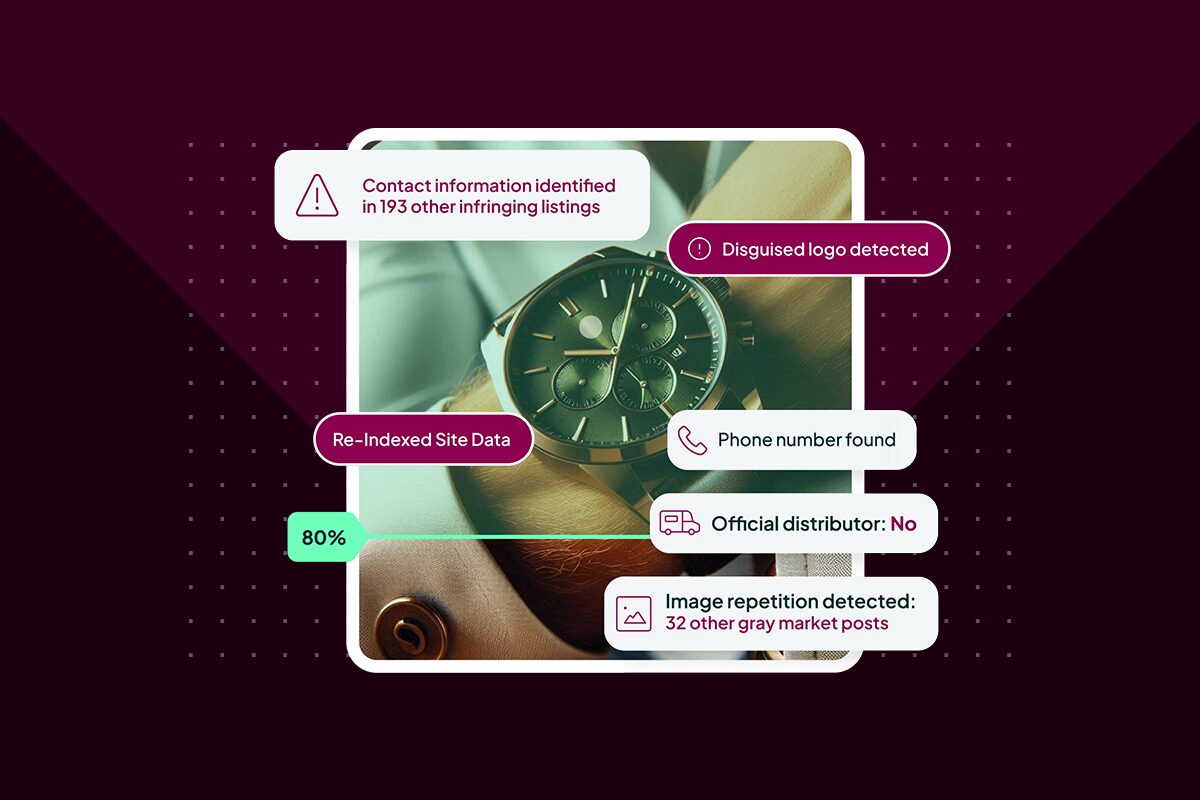Blog
Christmas 2018: Dangerous fake toys and electronics
- Brand Protection

To most, Christmas is synonymous with family, gift giving and gratuitous amounts of food. But hidden beyond the presents is a dark side to the festive season that many are unaware of.
Fake goods are widespread and can be found on marketplaces such as Amazon and eBay, despite their anti-counterfeiting measures. With the global counterfeit trade now worth over half a trillion US dollars, fraudsters look upon the festive season with glee.
Last year alone, counterfeit goods worth nearly €500m were seized at EU borders. The likelihood is that fake goods many times that value passed through uninhibited and ended up in the hands of consumers. Whilst the impact on brand reputation and sales should not be understated, the threat to consumer safety should alarm rights holders and prompt action.
In this two-part series, we reveal the threats that consumers and brands face this Christmas. Part one will delve into two key counterfeiting areas, toys and electronic goods, identifying trends and the risks posed to consumers. Next week, we will examine the human cost of the counterfeit trade, looking at the exploitation taking place in the factories and sweat shops that produce the fake luxury products sold during Christmas.
Threats this Christmas
Online consumer spending has already exceeded £28 billion this year in the UK and continues its upward spiral as high-street footfall declines. Infringers are finding it increasingly easy to distribute fake goods online, with shopping habits moving to marketplaces and resale sites. Cybersquatted websites and marketplace listings both provide ample opportunity for counterfeiters to trick consumers into thinking they are purchasing genuine products.
Fake toys putting child safety at risk
The retail value of fake toys seized at EU borders in 2017 was €21 million. This represents a 77% decrease in value since 2016, indicating that an increasing number of dangerous goods are passing between countries undetected, with anti-counterfeiting groups voicing their concerns over falling border seizures. More eye-opening still is the size of this counterfeit trade, with bad actors making an estimated £400m per year off the hard work and marketing spend of legitimate UK toy businesses.
UK Customs, the Police Intellectual Property Crime Unit (PIPCU) and Trading Standards are all on the lookout for dangerous counterfeit toys this Christmas. This task is incredibly important; preventing counterfeits such as Kate Middleton dolls made with carcinogenic materials or teddy bears with loose parts that pose choking risks, from reaching UK households is essential to protecting consumers.
But it isn’t just Western consumers at risk. LEGO has long-battled knock-off products in China, with one brand in particular, ‘LEPIN’, continuing to be a thorn in the Danish building block maker’s side. LEGO often find themselves in the unenviable situation where not just their own IP is infringed, but their licensor partner’s is too. Whilst LEGO recently won a major court ruling against LEPIN, the cease and desist instructions make no mention of the Chinese company’s knock-off brands, ‘Star Wnrs’ (that wasn’t a typo) and ‘Star Plan’. Licensed lines are difficult for LEGO to litigate against as only Disney are authorized to enforce on their IP.
Life threatening counterfeit electronics
Fake electronic goods have seen increasing scrutiny following the alarming incidence of house fires caused by counterfeit phone chargers. Unsafe electronics are documented to have caused housefires, severe injuries and even fatalities. The significance of the issue was highlighted by PIPCU who recently issued a press release warning about the dangers of fake electronic products this Christmas. Power supplies, hair stylers and lithium-ion batteries were all highlighted as popular targets for counterfeiters.
Injury and property damage aren’t the only issues associated with the fake electronics; counterfeiters also engage in identity fraud through cybersquatting. Consumers purchasing from counterfeit sites risk facing months of anguish as they attempt to regain control of stolen identities. After an experience like this, consumers may question a brand’s reputation, asking why the rights holders hadn’t taken down the fraudulent site during the largest shopping season of the year.
There are brands, however, that have taken the threat of counterfeit electrical goods seriously. Apple only recently agreed to sell iPhones on Amazon after the e-commerce giant promised to crack down on sellers of fake chargers and other products that infringed its IP. This comes as Amazon and other marketplaces are looked upon with increased scrutiny for facilitating the sale of counterfeit goods.
Combating Counterfeiting
Counterfeiting operations increase their production over the Christmas season and pose a clear challenge to both brands and consumers. To achieve meaningful reductions in infringements, rights holders must put in place comprehensive brand protection strategies that deliver. At Corsearch, we harness our technology and industry expertise to provide our clients with a toolset to protect their brand online and prevent counterfeits reaching consumers. If you believe your brand is under threat or are curious to see the scale of your issue, request a free Brand Health Check today.



